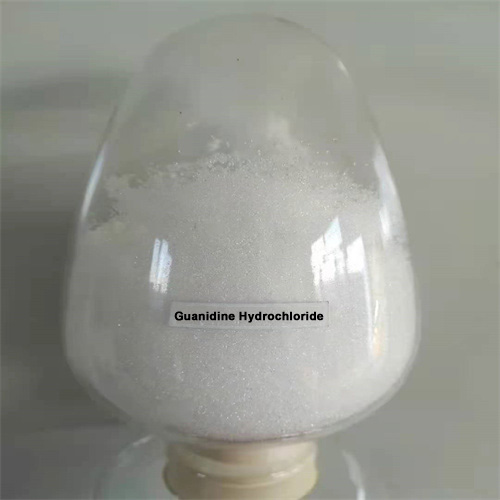What is Guanidine Hydrochloride?
2023-10-18
Guanidine hydrochloride, with the chemical formula CH5N3·HCl, is an organic compound that is commonly used in various scientific and industrial applications. It is a white crystalline solid with a strong odor. Guanidine hydrochloride is a salt that is formed by the reaction between guanidine, a strong base, and hydrochloric acid.
Here are some key points regarding guanidine hydrochloride:
1. Protein Denaturation and Solubilization: Guanidine hydrochloride is widely used in biochemistry and molecular biology laboratories as a protein denaturant and solubilizing agent. It disrupts the native structure of proteins by breaking hydrogen bonds and hydrophobic interactions, leading to the unfolding or denaturation of the protein. This property is particularly useful in protein purification, isolation, and analysis.
2. Protein Folding and Refolding: Guanidine hydrochloride can also be used in the refolding of denatured or misfolded proteins. By gradually removing guanidine hydrochloride from the protein solution, the protein can re-establish its correct three-dimensional structure, allowing it to regain its biological activity. This technique is often employed in the production of recombinant proteins and the study of protein folding kinetics.
3. Nucleic Acid Purification: Guanidine hydrochloride is utilized in nucleic acid extraction and purification protocols. It helps to disrupt the structure of cell membranes and denature proteins, allowing for efficient release and extraction of DNA or RNA from biological samples. Guanidine hydrochloride is commonly used in combination with other reagents in various nucleic acid purification kits and methods.
4. Chaotropic Agent: Guanidine hydrochloride acts as a chaotropic agent, meaning it disrupts the structure of water molecules and promotes the solubility of hydrophobic substances. This property is beneficial in biochemical and biophysical studies, as it aids in the solubilization of hydrophobic molecules, including lipids, membrane proteins, and certain small organic compounds.
5. Chemical Synthesis: Guanidine hydrochloride is utilized in chemical synthesis as a versatile reagent. It serves as a nitrogen source in the formation of various organic compounds, such as guanidine derivatives, urea, and carbamates. Guanidine hydrochloride is also employed in the synthesis of pharmaceuticals, agrochemicals, and other fine chemicals.
6. Safety Considerations: Guanidine hydrochloride should be handled with caution due to its potential irritant and toxic properties. It can cause skin, eye, and respiratory irritation upon contact or inhalation. Proper safety precautions, including the use of personal protective equipment, should be followed when working with guanidine hydrochloride.
Guanidine hydrochloride's diverse applications in protein biochemistry, nucleic acid purification, and chemical synthesis make it an important compound in scientific research and various industries. Its ability to denature proteins, solubilize hydrophobic substances, and serve as a chaotropic agent contributes to its wide utility in laboratory settings.



